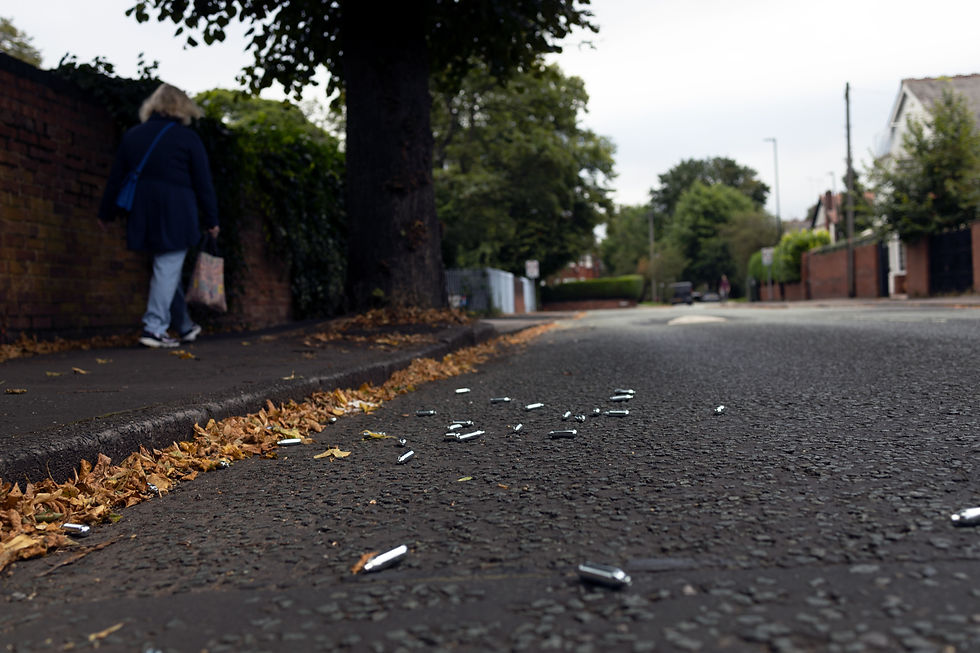Violence and Vulnerability
- Crest Advisory
- Feb 5, 2021
- 3 min read
Updated: Apr 29
Insights Report
Authors: Sarah Kincaid, Director | Jessica Lumley, Strategy and Insight Manager | Dr Molly Corlett
Friday 5 February 2021

FINAL REPORT (PDF): Violence and Vulnerability
This report explores the issue of vulnerability as a driver of serious violence, focusing on young people. It summarises the current trends in violence and patterns of vulnerability among children and young people, including the rise in poverty and deprivation.
We look at the backgrounds and circumstances of a group of offenders and victims of serious violence to explore vulnerabilities that are thought to be connected to greater risks of violence and draw together common themes.
Finally, we look at the effectiveness of current approaches to protecting and supporting young people who are at risk of serious violence, offering some recommendations for change.
National context
The recent rise in serious violence in England and Wales has been characterised by a shift towards younger offenders and younger victims. There is evidence that many young people involved in violence are very vulnerable due to their backgrounds and circumstances. Some of these vulnerabilities appear to have been rising for the past five years including levels of poverty and deprivation.
Numbers at risk of violence due to poverty and deprivation
Over 213,000 children in England aged 11 to 17 are vulnerable to serious violence due to deprivation and neighbourhood crime. The number of children is unevenly spread across England: nearly 40% live in ten local authority areas. There is growing evidence that Covid and lockdown measures will exacerbate the risks of vulnerability.
Victims and perpetrators are not distinct groups
Crest analysed a group of perpetrators and a group of victims of violence and found they are not distinct groups. Many violent offenders are also victims - often at the same time. There were high levels of vulnerability among both groups. Details about the young people treated in a London Major Trauma Centre show that experiencing violence, witnessing violence and living in a violent area are by far the most prominent risk factors; many had suffered a traumatic bereavement.
Almost all of the 57 young people in the perpetrator group had previously been victims of violence, either inside or outside the family. Details about the group, provided by a London Youth Offending Team, showed they had serious mental health needs. Many of them were not in education, employment or training - critical protective factors against involvement in violence.
Social network analysis
Crest conducted a Social Network Analysis of a Youth Offending Team cohort in one London Borough and found that a group of young people linked to a series of violent incidents shared multiple connections. In the criminal justice sphere, such analysis is commonly used to find links between members of organised crime groups. Our prototype shows the value of Social Network Analysis for safeguarding teams who need to understand the risk a young person faces outside their family setting in order to develop effective services and interventions.
The effectiveness of current responses
Our assessment indicates there’s a lack of grip and urgency around those at risk of, and involved in, violence, with many gaps in arrangements to protect them - in particular for victims of violence.
Current safeguarding arrangements are not designed for adolescents at risk of violence outside their home.
Early help services focus on younger children; as cases grow, families with older children at risk are not treated as a priority.
A greater focus on diverting young people away from prosecution may have missed some whose offending has escalated into violence. At the same time, prevention work by youth offending teams has been significantly reduced.
Community safety approaches are not being fully utilised to keep young people safe.
Children who are more likely to be at risk are spending long periods of out of school, and informal practices such as ‘off-rolling’ appear to be more common.
Childhood trauma can make it hard for people to trust services so they disengage. But support often focuses on managing immediate risks rather than building trust over the longer term.
Recommendations
Local authorities should be required to undertake a strategy and action plan on how they will safeguard children at risk of violence and criminal exploitation outside the home, as they have for child sexual exploitation.
School funding arrangements should provide incentives for children at risk of exclusion to be kept in school wherever possible.
Youth Offending Teams should be given a role in assessing the risks of children who are victims of violence.
Trauma-informed training should be rolled out across law enforcement and other services who come into contact with perpetrators or victims of violence.
The government should dedicate resources to supporting 18 to 24-year-olds who are vulnerable to violence.
Government should commit to simplifying the current patchwork of prevention-oriented bodies to ensure a single body is charged with preventing violence locally (such as community safety partnerships) underpinned by a duty to cooperate.



